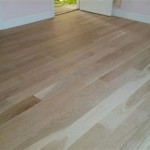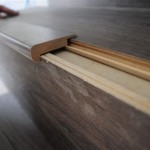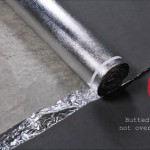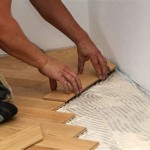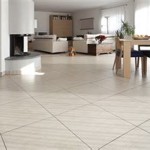Reclaimed Oak Flooring: A Sustainable and Character-Rich Choice
Reclaimed oak flooring represents a compelling alternative to newly manufactured timber products. It offers a unique blend of aesthetic appeal, historical significance, and environmental responsibility. The inherent character of reclaimed oak, coupled with its durability and sustainable nature, makes it an increasingly popular choice for both residential and commercial projects.
This type of flooring is sourced from timbers previously used in various structures, such as barns, factories, warehouses, and even old homes. These timbers are carefully salvaged, processed, and repurposed into flooring planks, effectively giving them a new lease on life. The process minimizes waste and reduces the demand for newly harvested trees, contributing to a more sustainable approach to construction and renovation.
The benefits of using reclaimed oak extend beyond its environmental advantages. It offers a distinct visual texture and rich story that cannot be replicated by new flooring. The wear and tear accumulated over decades, sometimes centuries, add to its unique beauty. These floors often exhibit nail holes, saw marks, and grain patterns that tell a tale of the wood's previous existence, adding a touch of history and authenticity to any space.
The Sourcing and Processing of Reclaimed Oak
The journey of reclaimed oak flooring begins with the careful sourcing of suitable timbers. Demolition sites, deconstruction projects, and salvage operations are the primary sources. Skilled professionals carefully assess the salvaged wood for usability, identifying pieces that are structurally sound and free from irreparable damage. The process requires a keen eye and a deep understanding of wood characteristics to ensure the quality and longevity of the final product.
Once sourced, the timbers undergo a rigorous cleaning and processing procedure. This typically involves removing nails, screws, and other foreign objects embedded within the wood. The process then progresses to kiln drying, a crucial step to reduce the moisture content and stabilize the wood dimensions. Kiln drying minimizes warping, twisting, and other issues that can arise from fluctuations in humidity and temperature, ensuring the long-term stability of the flooring.
Following kiln drying, the timber is milled into flooring planks of varying widths and thicknesses. Precision milling is essential to ensure consistent dimensions and a smooth, even surface. The planks are often tongue-and-grooved to facilitate easy installation and create a seamless floor. Depending on the desired aesthetic, the planks may undergo additional treatments such as sanding, wire brushing, or staining to enhance the natural grain and character of the wood.
The grading of reclaimed oak flooring is another important factor to consider. Grading refers to the classification of the flooring based on its appearance, including the presence of knots, checks, splits, and color variations. Different grades offer varying levels of character and visual uniformity. For example, a "character grade" might feature a higher concentration of knots and imperfections, showcasing the wood's history and rustic charm. Conversely, a "select grade" might exhibit fewer imperfections and a more consistent appearance, providing a cleaner and more refined aesthetic.
The Aesthetic and Design Versatility of Reclaimed Oak
Reclaimed oak flooring boasts exceptional aesthetic versatility, making it suitable for a wide range of design styles. Its unique character and warm tones can complement both traditional and contemporary interiors. The natural variations in color and grain provide a visual depth and complexity that adds richness and interest to any space.
In traditional settings, reclaimed oak flooring can evoke a sense of heritage and authenticity. Its rustic charm and timeworn appearance can create a cozy and inviting atmosphere, perfect for farmhouses, cottages, and historically inspired homes. The presence of nail holes and saw marks further enhances the historical narrative, adding to the overall character of the space.
In contemporary settings, reclaimed oak flooring can provide a striking contrast to clean lines and modern furnishings. Its natural warmth and texture can soften the starkness of minimalist designs, adding a touch of organic beauty. The juxtaposition of old and new creates a visually dynamic and engaging environment. Furthermore, the sustainable nature of reclaimed oak aligns with the values of eco-conscious design, making it a perfect choice for environmentally friendly homes.
The finish applied to reclaimed oak flooring can significantly impact its overall appearance. Oil-based finishes tend to enhance the natural color and grain of the wood, providing a warm and lustrous sheen. Water-based finishes offer a more matte appearance and are often preferred for their low VOC (volatile organic compound) content. The choice of finish depends on the desired aesthetic and the specific needs of the project.
The installation pattern of reclaimed oak flooring can also influence the visual impact. Traditional patterns such as straight plank, herringbone, and chevron can create a classic and timeless look. More contemporary patterns such as wide plank, random width, and diagonal installations can add a modern twist. The choice of pattern should complement the overall design of the space and reflect the desired aesthetic.
The Environmental and Economic Benefits of Reclaimed Oak
The environmental advantages of using reclaimed oak flooring are substantial. By repurposing existing timber, it reduces the demand for newly harvested trees, helping to preserve forests and protect biodiversity. Deforestation contributes to climate change, soil erosion, and habitat loss. Reclaimed oak flooring provides a sustainable alternative that helps to mitigate these negative impacts.
Furthermore, the manufacturing process of reclaimed oak flooring typically requires less energy than the production of new flooring. Less energy consumption translates to lower greenhouse gas emissions, contributing to a smaller carbon footprint. By choosing reclaimed oak, consumers can make a more environmentally responsible choice that supports sustainable practices.
From an economic perspective, reclaimed oak flooring can offer long-term value. While the initial cost may be slightly higher than some new flooring options, its durability and longevity can result in cost savings over time. Reclaimed oak is often denser and more stable than newly harvested wood, making it more resistant to wear and tear. This durability reduces the need for frequent repairs or replacements, extending the lifespan of the floor and minimizing long-term costs.
In addition, the unique character of reclaimed oak flooring can add value to a property. Its historical significance and aesthetic appeal can enhance the overall ambiance of a home or commercial space, making it more desirable to potential buyers or tenants. The use of sustainable materials can also be a selling point, appealing to environmentally conscious consumers who prioritize eco-friendly features.
The availability of reclaimed oak flooring may vary depending on the region and the specific type of wood. It is important to source reclaimed oak from reputable suppliers who adhere to sustainable practices and ensure the quality of their products. Working with experienced professionals can help ensure a successful installation and maximize the long-term benefits of reclaimed oak flooring. The process involves careful consideration of the subfloor, proper acclimatization of the wood, and the use of appropriate adhesives and fasteners. Proper installation is crucial for ensuring the stability and longevity of the floor.
Ultimately, reclaimed oak flooring provides a compelling combination of aesthetic appeal, historical significance, and environmental responsibility. By choosing reclaimed oak, consumers can create beautiful and sustainable spaces that reflect their values and enhance their quality of life. The flooring serves as a testament to the enduring power of nature and the importance of preserving our natural resources. Its timeless appeal and character-rich texture ensure that it will remain a valued element in architectural design for years to come.

Heritage Oak Flooring Reclaimed Wood Solid Based

Reclaimed Oak Water Resistant Laminate Floor Golden Select

The Antique Oak Flooring Company Reclaimed Specialists

Reclaimed Red Oak White Wood Flooring Longleaf Lumber

Heritage Reclaimed Oak Resawn Timber Co

Reclaimed Antique Oak Boards Brushed Bca Materials

Reclaimed Antique Oak Flooring Per M2

Reclaimed Oak Floors The British Wood Flooring Company

Reclaimed Oak Water Resistant Laminate Floor Golden Select

Reclaimed Wood Flooring Old Floors Rustic Vintage
Related Posts

